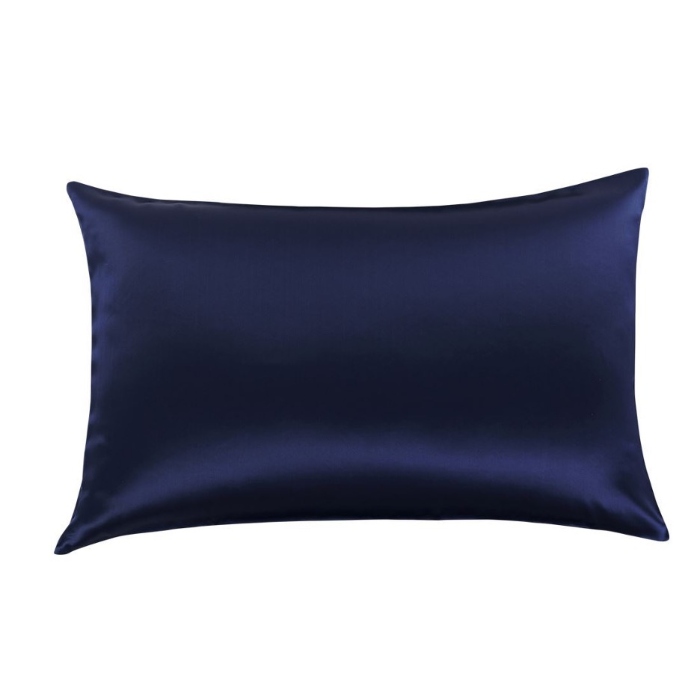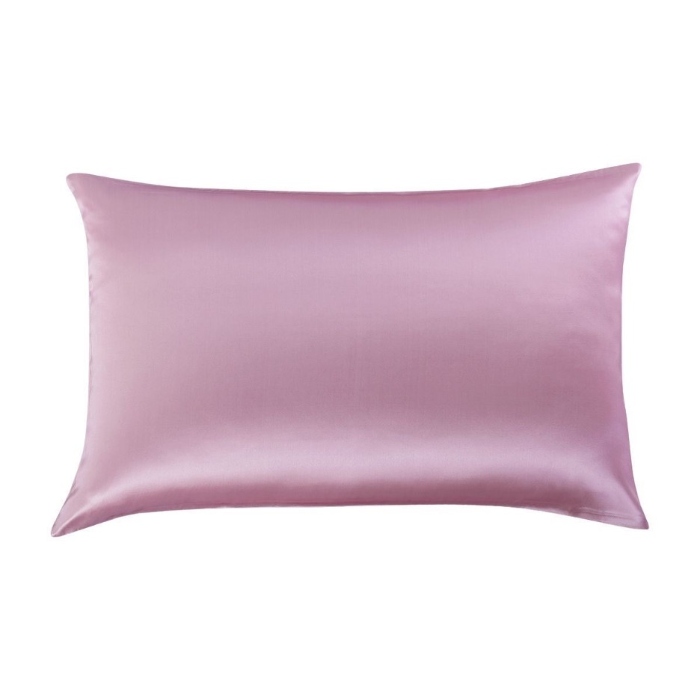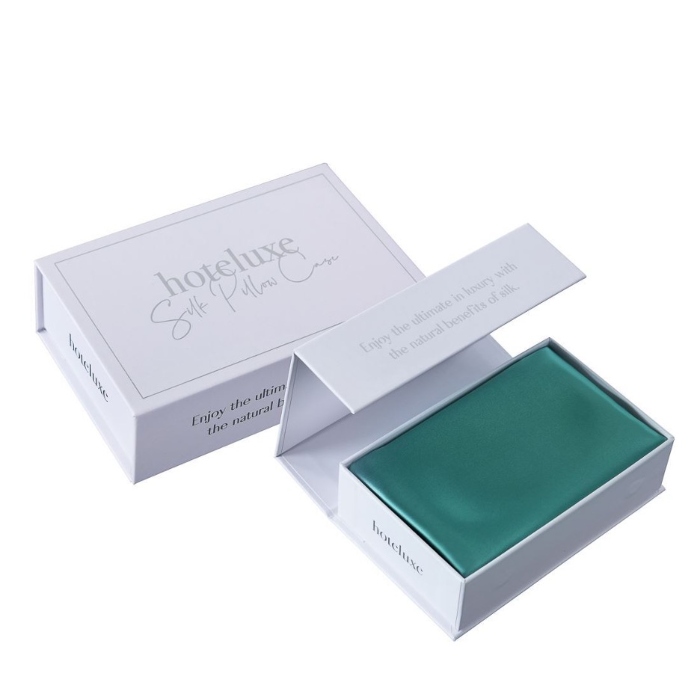How to Wash Silk Pillowcases
Author: Manchester Collection Date Posted:16 September 2022
Silk is undoubtedly one of the most luxurious materials. If you want an upgrade for your bed, look no further than silk pillowcases. They aren’t just chic accessories, but they are also hypoallergenic, they protect your hair and skin, and they can make you feel like sleeping on a cloud.
There are a lot of benefits to sleeping on silk pillowcases, and even though their price tag seems a bit steep at first, it’s a great investment for everyone who wants to improve their sleep quality.
However, owning beautiful silk pillowcases doesn’t mean anything if you don’t wash them regularly. And if you know anything about silk, you know that it’s a very delicate fabric that can’t be washed like cotton or some other sturdy fabric.
If you’re wondering how to make sure your silk pillowcases are always clean and look brand-new after every wash, we’re here to help.
How often should you wash your silk pillowcases?

Before we get into the process of how to wash your silk pillowcases, we first need to look at how frequently you should do it. A lot of people try to delay washing their silk bedding for a long time because they don’t want to risk ruining the beautiful and expensive fabric.
However, during the night your skin and hair produce various oils that transfer to your pillowcase. This is especially true if you use skincare products that can easily transfer from your face to your bedding.
If you sleep on a dirty pillowcase, you will miss out on all the benefits silk bedding brings, so make sure to wash them at least once a week. And if you have allergies or a problematic skin condition, you need to swap out and wash your pillowcases every few days.
Start with pre-treating your stains
Stains are very annoying, but they occur more often than we would like. Don’t think a stain has ruined your pretty silk pillowcase, and whatever you do, don’t panic. Stains are easily treatable and if you go through the right steps, soon enough you’ll forget they were ever there.
Don’t put the pillowcase in the wash right away, but instead pre-treat the stains. And since silk is such a delicate fabric, you need to be especially careful when dealing with stains so as to not ruin your pillowcases.
Here are all the steps you need to take to wash your silk pillowcases properly.
Make sure to test the colour
When removing stains, your top priority should be to protect the material itself. However, you should also keep in mind that when you remove the stain, there is a chance you will remove some of the colour as well. This is why it’s important to test the colour before proceeding with the next steps.
This is something you can easily do. To check whether or not the fabric’s dye will run, all you need to do is blot a small section of your pillowcase with a damp, white cloth. Try to find a spot that isn’t easily visible, like for example underneath the hem.
If any colour transfers to the white cloth, it wouldn’t be smart to try to remove the stains yourself. Instead, it would be better to take the pillowcases to a local dry cleaner and let them take care of the problem for you.
Act as soon as possible
Whatever you do, don’t allow the stains on your silk pillowcases to dry before you remove them. Wet stains are typically easier to clean because they haven’t settled into the fabric yet, so you should start cleaning as soon as you notice a stain.
Use natural ingredients
Typically, people use stain removers with harsh chemicals or chlorine bleach when they’re dealing with pesky stains, but you should avoid those products.
Chlorine bleach can actually dissolve silk. If you use chlorine or a stain remover that contains it, you will soon notice the fibres breaking and yellow stains will start to appear. Instead, opt for natural ingredients that will keep your silk pillowcases safe.
Make a solution of one part white vinegar or lemon juice to one part lukewarm water, this should work for regular stains. But if you’re dealing with grease or oil stains, apply some talcum powder to the affected area and let it sit overnight. This will lift the stain.
Don’t rub, dab
Rubbing delicate fabrics such as silk isn’t recommended, so when you’re dealing with stains, it’s best to dab them away. If you rub, not only will you most likely ruin the fabric of your pillowcase, but you will also spread the stain around.
Decide between machine and hand washing
Most experts will tell you that when dealing with silk, it’s best to take it to the dry cleaners or wash it by hand. However, while hand washing is preferred, it’s not always necessary.
To determine whether you should wash your pillowcase by hand or if it's safe to put it in the washing machine, the first thing you should do is check the label. The pillowcase manufacturer will detail if it’s safe for machine washing or not.
Another thing you can use to determine what washing option you should choose is the Momme. The Momme represents the density of your silk fabric and is represented in numbers. If you know that the Momme of your silk pillowcase is less than 20, it isn’t safe to put it in the washing machine.
Washing silk pillowcases by hand
If your pillowcases aren’t machine-washable or you simply want to ensure nothing ruins them, here is how to wash them by hand safely:
● Fill a container with water. Some people choose to use a bathtub when hand-washing laundry but since you’re only dealing with a pillowcase, a large bucket will be enough. Fill your container with lukewarm water that isn’t any warmer than 30°C, because anything hotter than that could damage the pillowcase.
● Add your laundry detergent. As we already explained, harsh chemicals can be very damaging to silk, so make sure to only use mild and delicate laundry soap.
● Soak your pillowcase. Submerge your pillowcase in the mixture of water and laundry soap and let it sit for a few minutes. You can swirl the pillowcase but don’t wring it out or scrub it in any way or you’ll damage it. Leave the pillowcase in the container for a maximum of five minutes; otherwise, it will shrink.
● Rinse and soften. After you’ve removed the pillowcase, dump out the water, rinse the container, and then fill it with cool water. Add around 60ml of white vinegar and a couple of drops of fabric softener and put your pillowcase back in it. This will rinse out the soap while also softening up the pillowcase.
● Rinse again. After you’ve let the pillowcase soak for one minute, remove it and re-fill the container with cool water. Submerge the pillowcase and swirl it around to remove soap and vinegar residue. If you notice your water is soapy, repeat this process one more time.
Washing silk pillowcases in the washing machine
The process of washing silk pillowcases by hand can be long and draining, so if you can put your pillowcase in the washing machine, feel free to do it. However, even if it’s machine washable, that doesn’t mean you shouldn’t be careful about how you go about the process.
Here is what you need to do:
● Prepare the pillowcase. You shouldn’t haphazardly throw the pillowcase in the washing machine and turn it on. Instead, turn the pillowcase inside out, and preferably also place it in a mesh laundry bag. This will keep the pillowcase safe while it tumbles around in the washing machine.
● Choose the right setting. Some modern washing machines come with a setting for silk, but if yours doesn’t, choose the delicate setting. Just like with hand-washing, never use a temperature warmer than 30°C.
● Use mild detergent. Find a mild and basic detergent that has low pH and never use heavy chemicals. If possible, try to find a gentle detergent that is specialized for silk. That way, you won’t have to worry about whether or not you’ll damage your bedding.
● Don’t put any other laundry in the washing machine. Don’t put any regular laundry in with your silk pillowcase because hooks and zippers can easily snag the fabric. However, if you have other silk bedding you need to wash, you can put it in the machine without any issues.
● Use the shortest spin cycle possible. Just like wringing out or scrubbing silk materials can damage them, so can a spin cycle that’s too long. Choose the shortest cycle your washing machine has.
Time to dry your pillowcases

Once your pillowcases are nice and clean, it’s time for the drying process. Now, you may be wondering what the best method for drying is. Since we mentioned you should avoid high temperatures for washing, you probably think that it isn’t safe to put silk in the drying machine.
That is only partly true. If you use the right methods, you can still get your clean pillowcase dry without damaging it. It should be mentioned that experts still recommend air drying any silk items, but the method you choose is up to you. And just like with washing, you need to be careful how you dry them.
Drying pillowcases in the dryer
If you decide to use a dryer, one thing you should always remember is that high temperatures and silk don’t mix. However, make sure to read the instructions on the label. If they say you can put your silk pillowcase in the dryer, you can do that, but you still need to be careful.
Whether or not you can use your dryer depends on the settings it has. If you notice that it has an “air fluff”, “no heat”, or “cool” setting, those are all safe options. Select one of those settings, but avoid leaving your pillowcase in the dryer for too long so as not to damage the dryer.
Luckily, silk is a fast-drying material so you shouldn’t have to wait more than a couple of minutes.
Air-drying your pillowcases
This is the preferred method when it comes to drying silk because it doesn’t pose any threat to the delicate material. Once you finish with the washing process, here is how you can dry your pillowcases:
● Lay the pillowcase on a towel. Place a clean and dry towel on a flat surface (such as a table, for example) while making sure the edges or corners aren’t folded or creased. Never wring out the pillowcase, but instead let the towel absorb any excess water.
● Roll the towel. Take one end of the towel and gently roll it inwards with the pillowcase inside it. Squeeze the rolled-up towel to press out excess water, but be careful not to press it too hard or wring it out.
● Lay the pillowcase on a new towel. Take your pillowcase out of a towel and place it on a new, fresh, and dry towel. Once again, lay it out on a flat surface without any folds and creases. Then leave the pillowcase for up to two days until it dries fully.
If you don’t want to wait this long, you can also line dry your pillowcases. However, if you opt for this method, make sure to keep your bedding away from the sun because the sunlight can make the colours fade.
Iron your pillowcases if you want
Even though this sounds contradictory since we mentioned multiple times that you should avoid heat at all costs, you can still iron your silk pillowcases. However, ironing isn’t always necessary. Even if your pillowcase is wrinkly, after a few nights, it will relax and straighten out.
Still, some people love to put on freshly ironed bedding, and that’s fine.
If you do choose to iron, follow these steps:
● Prepare the fabric first. A very important thing to remember is that if you want to retain the integrity and texture of silk, you can only iron your pillowcases when they’re damp. Before you start ironing, make sure to turn the pillowcase inside out and place a press cloth or hand towel over it.
● Choose the appropriate setting. If your iron has a silk setting, use it. If not, choose the lowest heat setting it has.
● Make sure to press. When you iron silk, you shouldn’t drag the iron across the fabric back and forth. Instead, gently press it down, lift it to let it cool a little bit, and then press it on a different section of the fabric. Try to leave the iron on the press cloth for as little time as possible.
● Avoid further wrinkling. While ironing, you can prevent possible future wrinkles if you ensure all sections of the fabric are laid perfectly flat and you only remove the pillowcase once it’s completely cooled down.
If you don’t want to use an iron, you can also get rid of the wrinkles in your silk pillowcase with a handheld steamer. Just make sure you don’t bring it too close to the fabric, so keep it at least one to two inches from the pillowcase.
Another tactic you can use is to hang your wet pillowcase in the bathroom while you take a bath or shower. The steam and the humidity will help soften the creases without having to put actual heat on the silk.
How to store silk after it’s been washed

If you’re not planning to put your silk pillowcases on your pillows as soon as they’re washed, you need to store them properly so they don’t suffer any damage while in storage.
Here are a few useful tips for storing silk:
● Make sure the pillowcase is completely clean and dry before you store it so the fabric doesn’t attract any moths.
● Softly roll your pillowcase. If you fold it tightly, you will weaken the fibres and create sharp creases.
● Store your pillowcases in a cool and dry area, far away from the sun. If you’re planning on long-term storage, make sure to place your pillowcases in a breathable plastic bag.
Sleep like a baby on clean and fresh silk pillowcases
Now, you might be thinking: All of this work just to wash silk pillowcases? But don’t forget that all good things in life require some work. If you want to enjoy all the benefits silk pillowcases bring, you need to be prepared to work for them a little bit.
However, there’s no need to worry. Even though this may seem like too much work, over time you will see that it’s not as bad as it seems. And as long as you follow all of the steps you read about here, you can enjoy your beautiful silk pillowcases for years to come.
